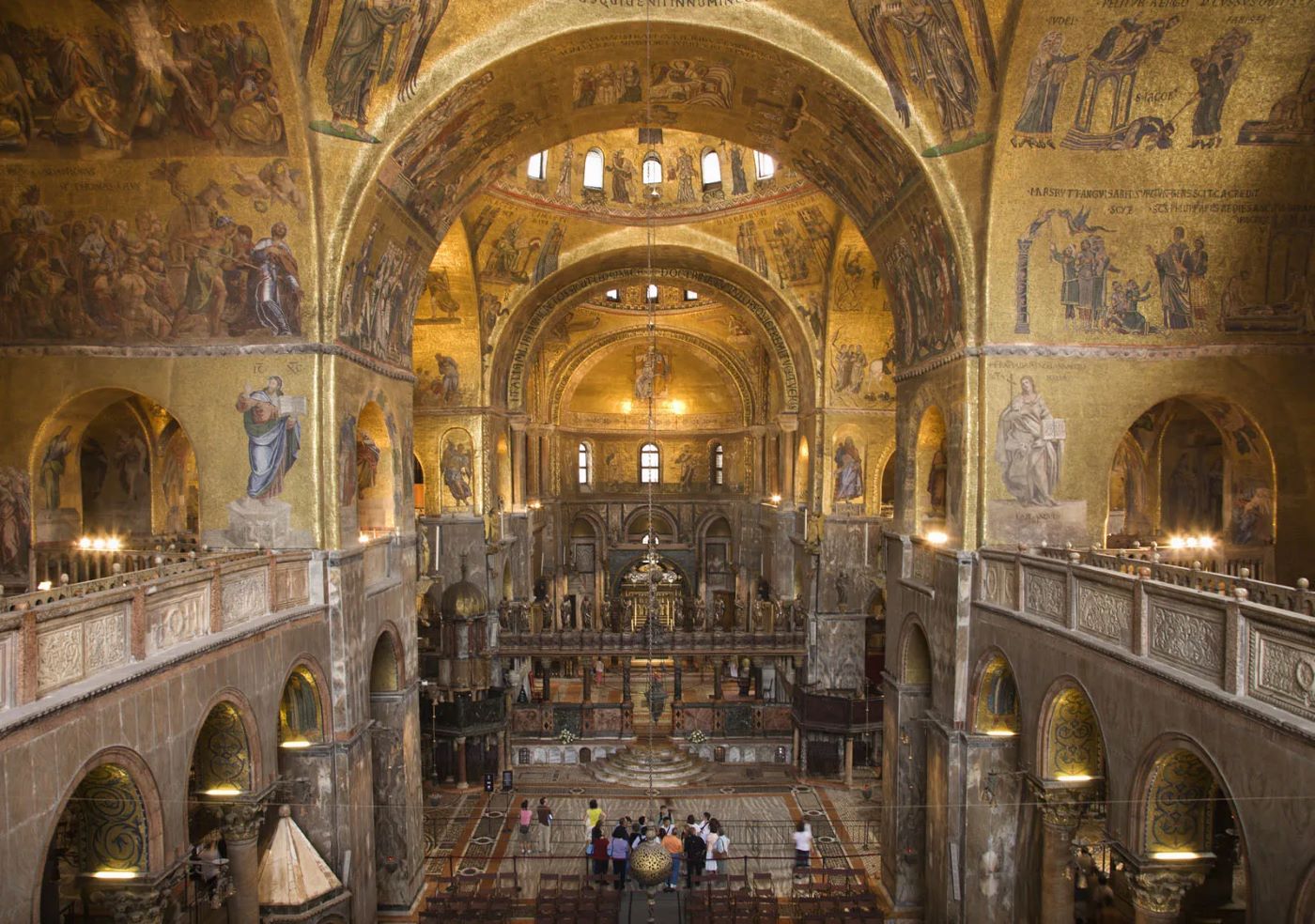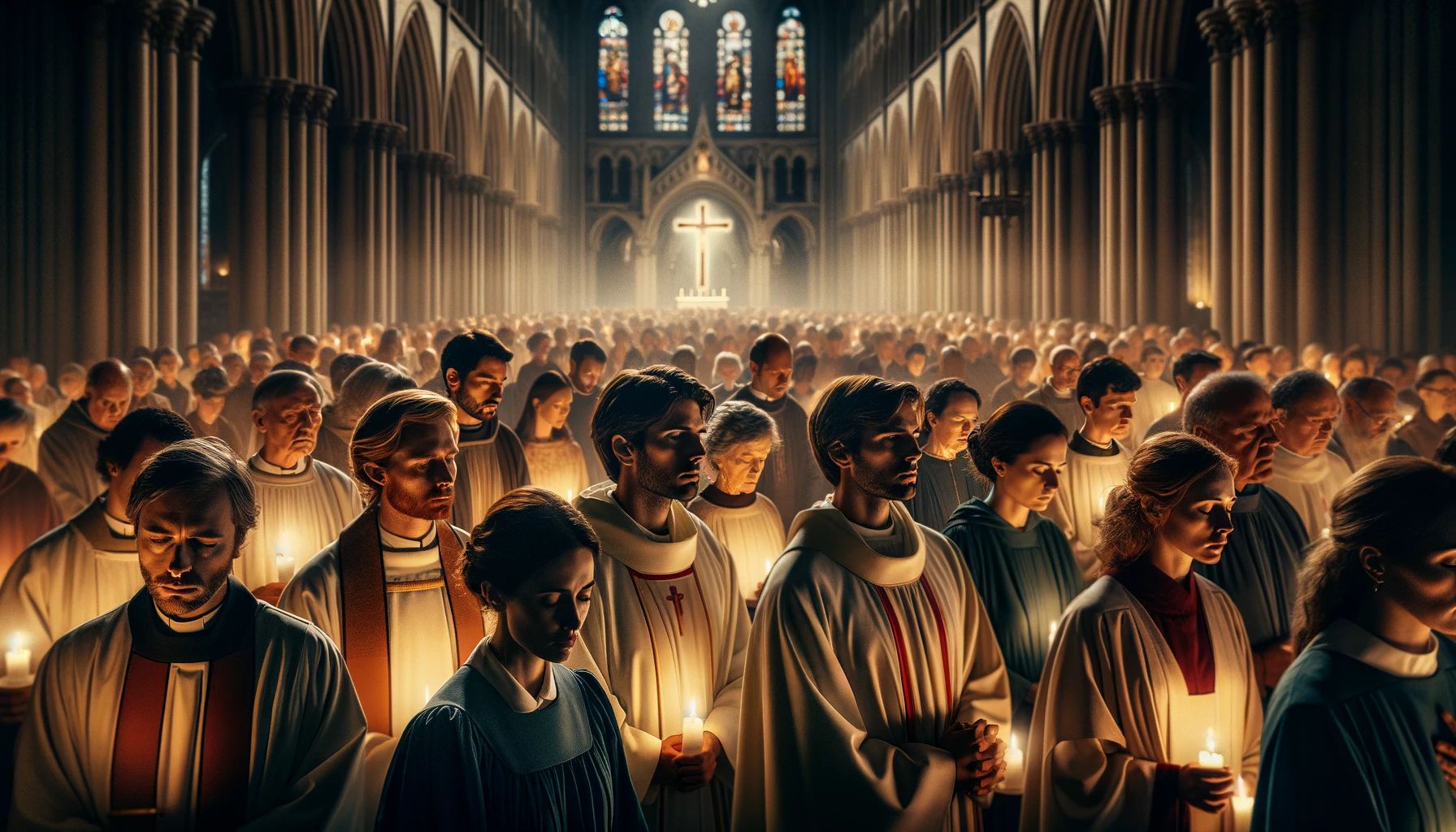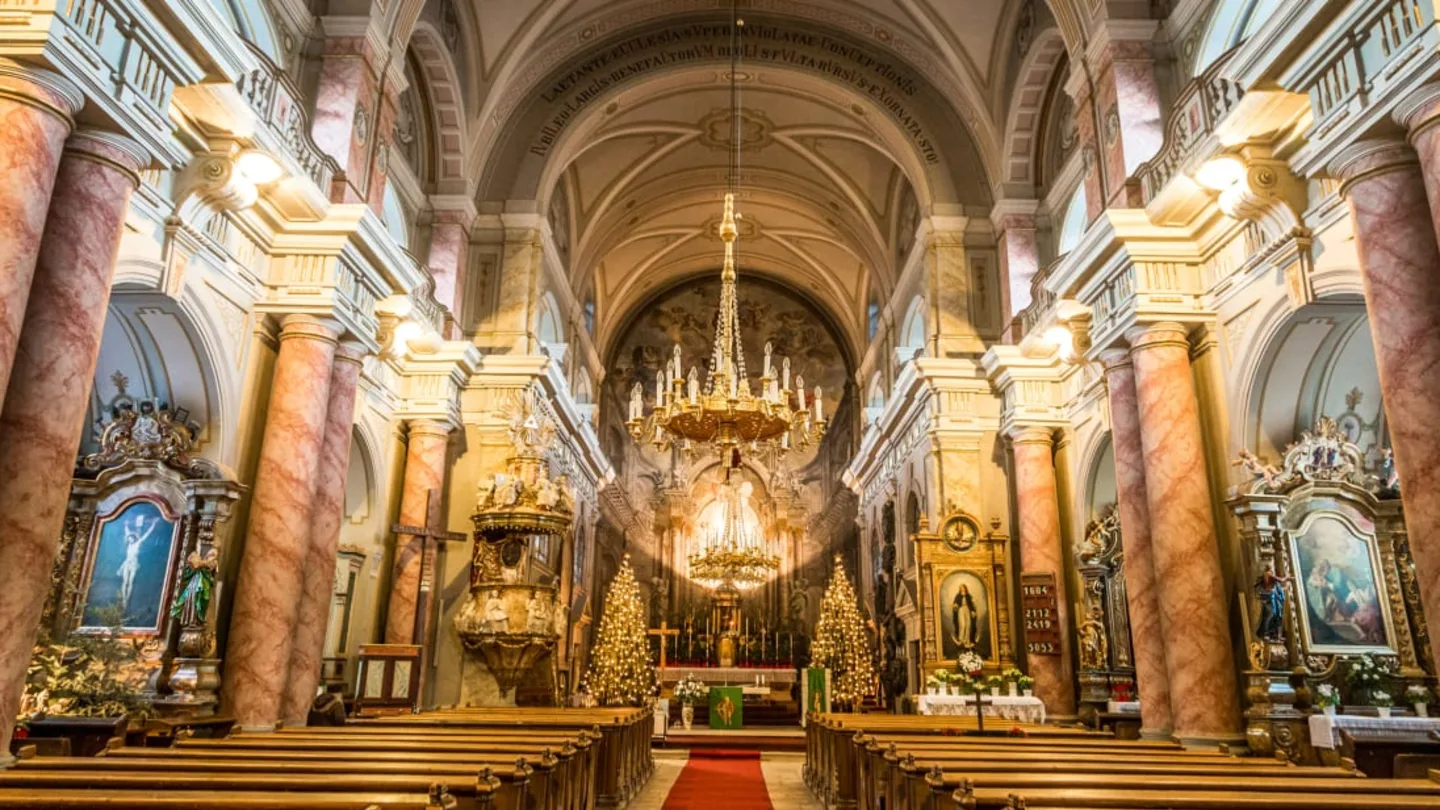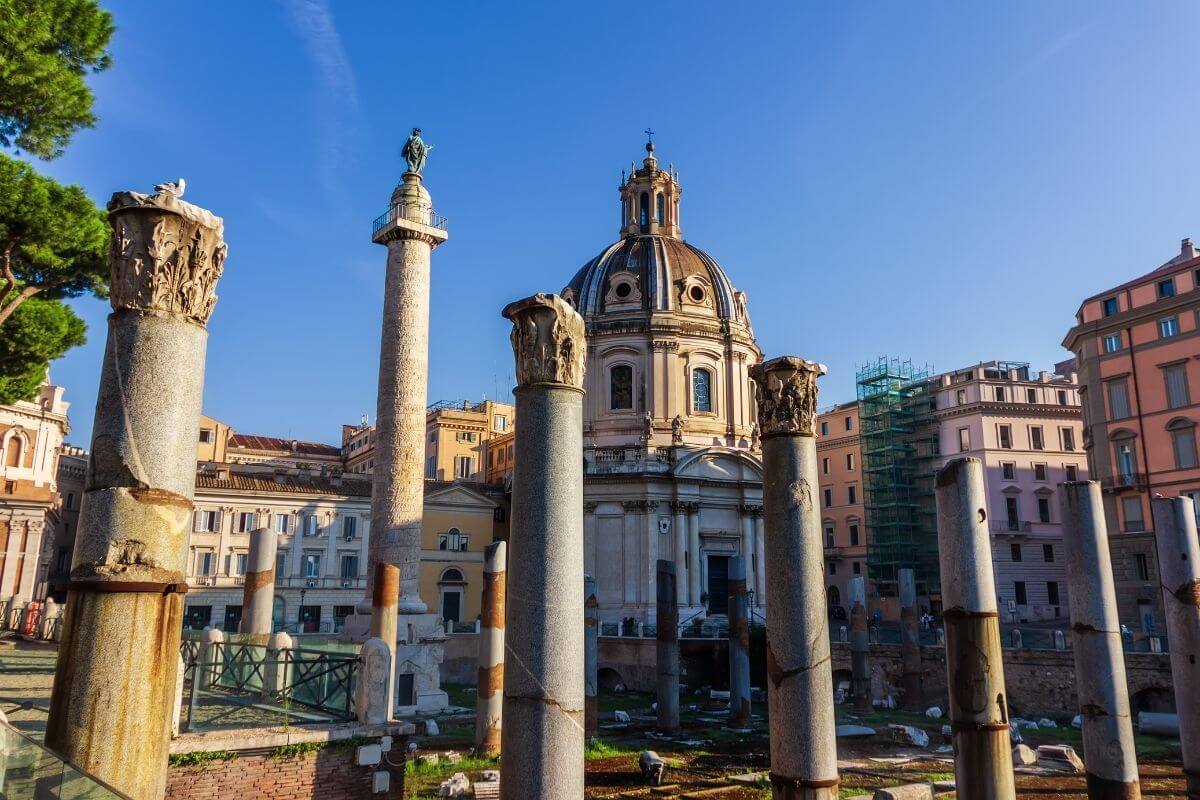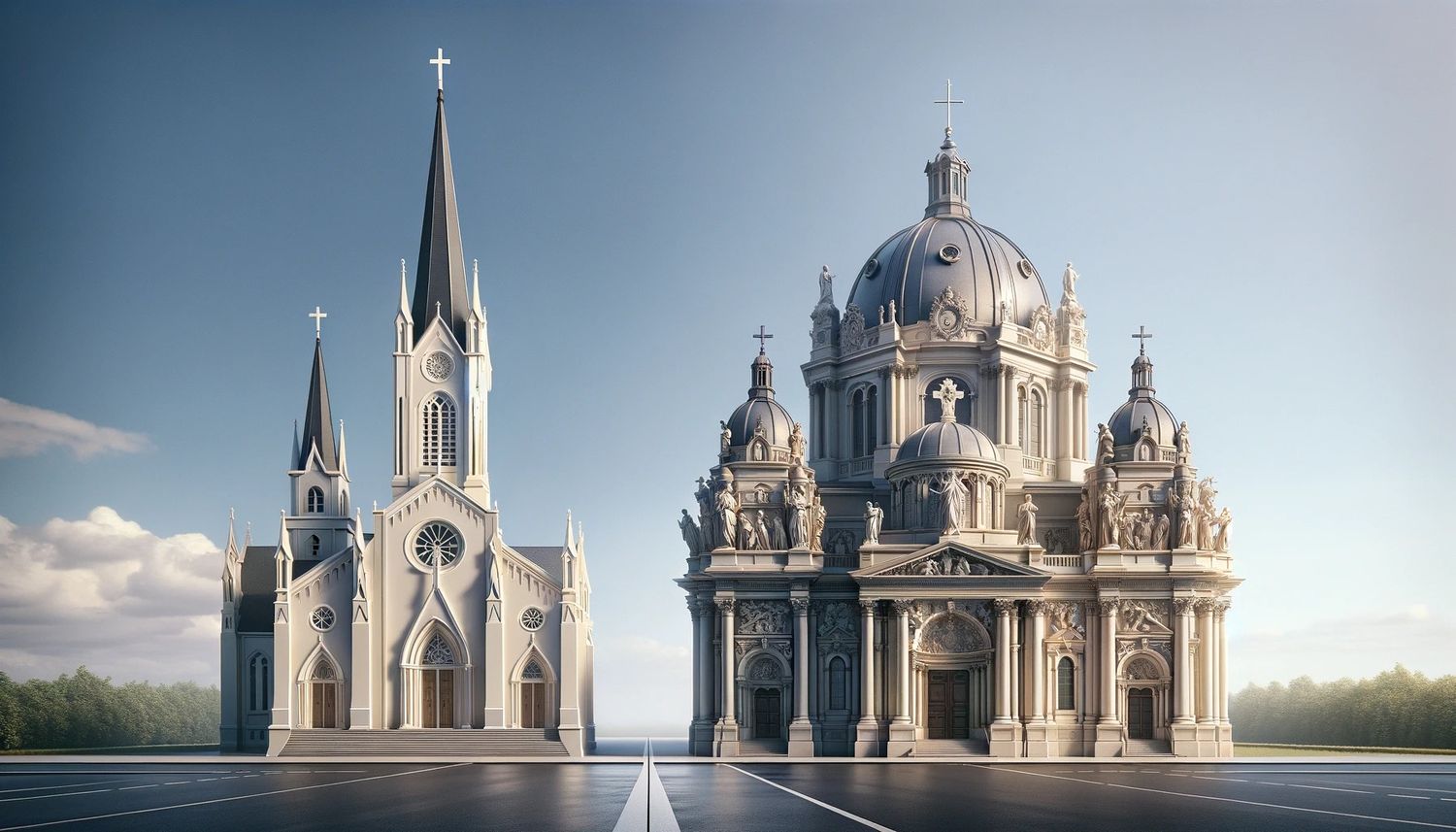Home>Arts and Culture>What Is The Round Extension At The End Of The Roman Basilica Hall
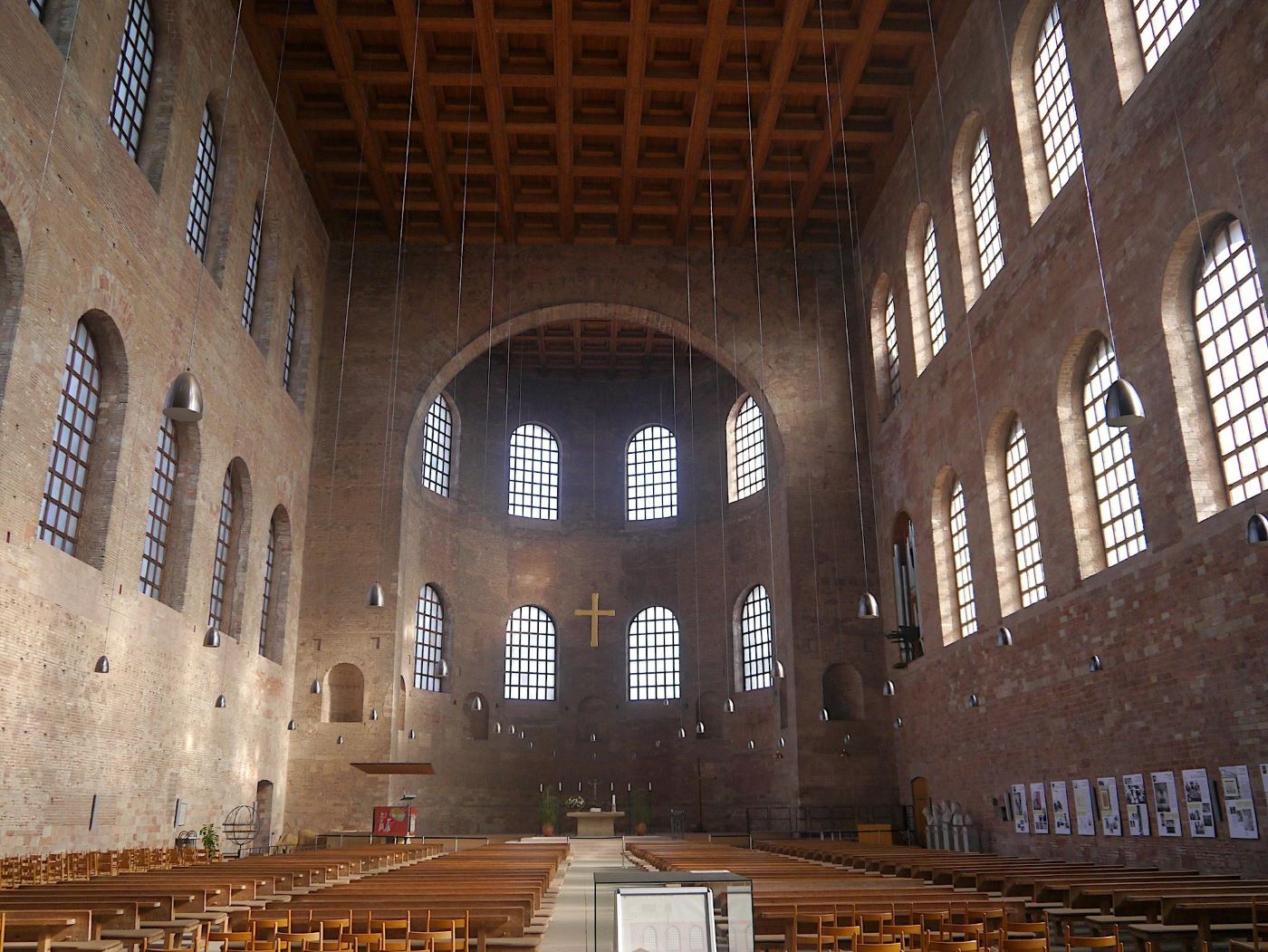

Arts and Culture
What Is The Round Extension At The End Of The Roman Basilica Hall
Published: February 11, 2024
Peter Smith, Editorial Director at Christian.net, combines deep insights into faith, politics, and culture to lead content creation that resonates widely. Awarded for his contributions to religious discourse, he previously headed a major organization for religious communicators, enhancing dialogue on faith's societal impacts.
Discover the significance of the round extension at the end of a Roman basilica hall in this insightful exploration of arts and culture. Uncover the historical and architectural importance of this unique feature.
(Many of the links in this article redirect to a specific reviewed product. Your purchase of these products through affiliate links helps to generate commission for Christian.net, at no extra cost. Learn more)
Table of Contents
Introduction
The Roman basilica hall stands as a testament to the architectural and cultural prowess of ancient Rome. These grand structures, characterized by their imposing columns, expansive interiors, and awe-inspiring designs, served as multifunctional spaces that hosted a myriad of activities, from legal proceedings and commercial transactions to social gatherings and religious ceremonies. One distinctive feature that often captures the curiosity of visitors and historians alike is the round extension located at the end of many Roman basilica halls.
This enigmatic architectural element, often referred to as the apse, holds a wealth of historical, cultural, and artistic significance. Its presence not only adds a touch of grandeur to the basilica hall but also serves practical and symbolic purposes that reflect the values and beliefs of the ancient Roman society. By delving into the historical background, physical description, and functional significance of the round extension, we can gain a deeper understanding of the Roman basilica hall and the role it played in shaping the cultural landscape of ancient Rome.
Read more: What Is A Roman Basilica
Historical Background of Roman Basilica Halls
The Roman basilica hall, an architectural marvel that has left an indelible mark on history, originated during the Roman Republic and reached its zenith during the Roman Empire. Initially, these grand structures were not places of worship, but rather served as public gathering spaces for a variety of civic and commercial activities. The term "basilica" itself was derived from the Greek word "basileus," meaning "king," reflecting the regal aura that these halls exuded.
The concept of the basilica hall was later adopted by the early Christian community, who repurposed these majestic structures as places of worship. This transition marked a significant shift in the function and symbolism of the basilica hall, as it evolved from a secular space to a sacred sanctuary. The architectural layout of the basilica hall, with its longitudinal design, towering columns, and expansive interior, provided an ideal setting for communal gatherings and religious ceremonies.
The historical significance of Roman basilica halls extends beyond their architectural prowess. These grand edifices served as vibrant hubs of social, political, and economic activity, embodying the essence of Roman civilization. They were the epicenter of legal proceedings, where magistrates presided over court cases and dispensed justice. Additionally, they facilitated commercial transactions, serving as bustling marketplaces where merchants and traders conducted business.
The evolution of Roman basilica halls mirrored the cultural and societal changes that swept through ancient Rome. As the empire expanded and flourished, so too did the grandeur and magnificence of these architectural marvels. Their enduring legacy is a testament to the ingenuity and vision of the ancient Romans, who crafted spaces that transcended mere functionality and became enduring symbols of power, prestige, and communal identity.
The historical background of Roman basilica halls provides a captivating glimpse into the rich tapestry of ancient Roman civilization, shedding light on the architectural, cultural, and societal dynamics that shaped this remarkable era. It is within the walls of these grand structures that the pulse of ancient Rome can be felt, echoing the voices of emperors, merchants, scholars, and citizens who converged within their hallowed halls.
Description of the Round Extension
The round extension, commonly known as the apse, stands as a defining feature of many Roman basilica halls, adding a touch of architectural grandeur and symbolic significance to these majestic structures. Positioned at one end of the basilica hall, the apse is a semicircular or polygonal projection that extends outward from the main body of the building. Its distinctive shape and strategic placement within the hall contribute to the overall visual impact and functional versatility of the space.
Architecturally, the apse serves as a focal point, drawing the eye and commanding attention with its graceful curvature and often ornate embellishments. The semicircular form of the apse creates a sense of enclosure, providing a visually striking backdrop for the activities and ceremonies that unfolded within the basilica hall. The design of the apse, with its soaring arches and intricate detailing, reflects the mastery of Roman engineering and artistic expression, showcasing the ingenuity and craftsmanship of ancient builders.
The interior of the apse is often adorned with decorative elements, such as intricate mosaics, frescoes, or sculptural reliefs, further enhancing its aesthetic allure. These artistic embellishments served to elevate the spiritual and ceremonial significance of the space, creating a captivating backdrop for religious rites, imperial proclamations, or public addresses. The apse, with its embellished interior and commanding presence, exuded an aura of authority and reverence, underscoring its role as a focal point within the basilica hall.
Functionally, the apse served a multifaceted purpose within the Roman basilica hall. Its semicircular or polygonal shape allowed for optimal acoustics, amplifying the voices of speakers or performers and ensuring that their words resonated throughout the expansive interior. This acoustic enhancement made the apse an ideal setting for public oratory, musical performances, and ceremonial pronouncements, amplifying the impact of these events and fostering a sense of grandeur and solemnity.
Furthermore, the apse often housed a raised platform or elevated seating area, known as the "cathedra," which served as a symbolic and practical seat of authority. This elevated platform, typically reserved for magistrates, dignitaries, or religious leaders, underscored the hierarchical dynamics of Roman society and imbued the apse with a palpable sense of power and prestige. From this vantage point, individuals of influence could address the gathered assembly, imparting their wisdom, edicts, or spiritual teachings with an air of authority and gravitas.
In essence, the round extension, or apse, of the Roman basilica hall encapsulates the fusion of architectural splendor, artistic expression, and functional significance. Its graceful form, adorned interior, and multifaceted functionality converge to create a space that transcends mere physical dimensions, embodying the cultural, spiritual, and societal ethos of ancient Rome. The apse, with its timeless allure and enduring legacy, remains a testament to the ingenuity and vision of the ancient builders who crafted these monumental structures.
Purpose and Function of the Round Extension
The round extension, or apse, of the Roman basilica hall served a multifaceted purpose that encompassed both practical functionality and symbolic significance. Its strategic placement and architectural design were meticulously crafted to fulfill a range of roles within the grandeur of the basilica hall.
Symbolic Significance
The apse held profound symbolic meaning within the Roman basilica hall. Its semicircular or polygonal form, often adorned with intricate artistic embellishments, conveyed a sense of reverence and grandeur. As a focal point of the hall, the apse provided a visually striking backdrop for religious ceremonies, imperial proclamations, and public addresses, imbuing these events with an aura of authority and solemnity. The embellished interior of the apse, featuring elaborate mosaics, frescoes, or sculptural reliefs, served to elevate the spiritual and ceremonial significance of the space, creating an atmosphere conducive to reflection, reverence, and awe.
Read more: What Is The Lutheran View Of The End Times
Acoustic Enhancement
Functionally, the apse was designed to optimize acoustics within the basilica hall. Its semicircular or polygonal shape facilitated the amplification and projection of sound, ensuring that the voices of speakers or performers resonated throughout the expansive interior. This acoustic enhancement made the apse an ideal setting for public oratory, musical performances, and ceremonial pronouncements, enhancing the impact of these events and fostering a sense of grandeur and solemnity. The architectural ingenuity behind the design of the apse contributed to the immersive and captivating auditory experience within the basilica hall, enriching the communal gatherings and ceremonies held within its hallowed confines.
Seat of Authority
Furthermore, the apse often housed a raised platform or elevated seating area, known as the "cathedra," which served as a symbolic and practical seat of authority. This elevated platform, typically reserved for magistrates, dignitaries, or religious leaders, underscored the hierarchical dynamics of Roman society and imbued the apse with a palpable sense of power and prestige. From this vantage point, individuals of influence could address the gathered assembly, imparting their wisdom, edicts, or spiritual teachings with an air of authority and gravitas. The cathedra within the apse symbolized the nexus of power and leadership, serving as a visual manifestation of the hierarchical structures that defined Roman governance and societal order.
In essence, the round extension, or apse, of the Roman basilica hall embodied a harmonious blend of symbolic resonance and practical functionality. Its architectural elegance, acoustic optimization, and symbolic significance converged to create a space that transcended mere physical dimensions, enriching the cultural, spiritual, and societal fabric of ancient Rome. The apse, with its timeless allure and enduring legacy, remains a testament to the ingenuity and vision of the ancient builders who crafted these monumental structures.
Examples of Roman Basilica Halls with Round Extensions
The architectural legacy of Roman basilica halls with round extensions is exemplified by several iconic structures that have withstood the test of time, serving as enduring testaments to the grandeur and cultural significance of ancient Rome. These magnificent edifices, each bearing the distinctive round extension known as the apse, stand as living chronicles of Roman architectural prowess and societal dynamism.
One notable example is the Basilica Ulpia, a majestic basilica hall located in the heart of Trajan's Forum in Rome. Constructed under the patronage of Emperor Trajan in the early 2nd century AD, the Basilica Ulpia exemplifies the grandeur and architectural innovation of Roman basilica halls. Its expansive interior, flanked by towering columns and crowned by a magnificent apse, served as a hub of legal proceedings, commercial transactions, and public gatherings. The apse of the Basilica Ulpia, adorned with intricate marble reliefs and statues, commanded attention and reverence, underscoring its role as a focal point within the grand hall.
Another remarkable example is the Basilica of Maxentius and Constantine, also known as the Basilica Nova, situated in the Roman Forum. This imposing basilica hall, commissioned by Emperor Maxentius and completed by Emperor Constantine in the early 4th century AD, features a colossal central nave culminating in a majestic apse. The apse of the Basilica Nova, adorned with vibrant frescoes and architectural embellishments, served as a backdrop for imperial proclamations and public ceremonies, infusing the space with an air of authority and grandeur. The Basilica Nova stands as a testament to the enduring legacy of Roman basilica halls and their round extensions, encapsulating the architectural splendor and cultural significance of these monumental structures.
Furthermore, the Basilica of San Clemente in Rome offers a captivating glimpse into the evolution of Roman basilica halls and their round extensions. This unique basilica, with its layered architectural history spanning multiple centuries, features a stunning apse adorned with intricate mosaics and ornate decorations. The apse of the Basilica of San Clemente, a testament to the fusion of artistic expression and spiritual symbolism, served as a focal point for religious ceremonies and communal gatherings, embodying the enduring legacy of Roman basilica halls as sacred sanctuaries and vibrant communal spaces.
These examples, among others scattered across the expanse of the former Roman Empire, stand as living testaments to the architectural ingenuity, cultural vibrancy, and enduring legacy of Roman basilica halls with round extensions. Each structure, with its commanding apse and rich historical significance, offers a window into the grandeur and cultural tapestry of ancient Rome, inviting visitors to immerse themselves in the timeless allure of these monumental edifices.
Conclusion
In conclusion, the round extension at the end of the Roman basilica hall, known as the apse, represents a convergence of architectural splendor, symbolic resonance, and functional versatility. From its origins as a secular gathering space to its transformation into a sacred sanctuary, the Roman basilica hall, with its commanding apse, stands as a testament to the cultural, societal, and artistic dynamism of ancient Rome.
The historical background of Roman basilica halls unveils a captivating narrative of architectural innovation, societal evolution, and cultural adaptation. These grand structures, with their towering columns and expansive interiors, served as vibrant hubs of legal, commercial, and communal activity, embodying the essence of Roman civilization. The transition of basilica halls into places of Christian worship marked a pivotal shift in their function and symbolism, underscoring their enduring relevance and adaptability across epochs.
The physical description of the round extension, or apse, illuminates its role as a focal point within the basilica hall. Its graceful curvature, adorned interior, and strategic placement created a visually striking backdrop for religious ceremonies, imperial pronouncements, and public addresses. The acoustic optimization of the apse enhanced the auditory experience within the hall, amplifying the impact of oratory and musical performances. Furthermore, the elevated platform within the apse, symbolizing authority and leadership, underscored the hierarchical dynamics of Roman society.
The purpose and function of the round extension encompassed both practical functionality and symbolic significance. The apse served as a visual and auditory centerpiece, infusing events with an aura of reverence and grandeur. Its role as a seat of authority and symbolic locus of power underscored the hierarchical structures that defined Roman governance and societal order, leaving an indelible imprint on the cultural landscape.
The examples of Roman basilica halls with round extensions, such as the Basilica Ulpia, Basilica of Maxentius and Constantine, and Basilica of San Clemente, offer compelling insights into the enduring legacy of these monumental structures. Each edifice, with its commanding apse and rich historical significance, serves as a living chronicle of Roman architectural prowess and cultural vibrancy, inviting visitors to immerse themselves in the timeless allure of ancient Rome.
In essence, the round extension at the end of the Roman basilica hall, with its timeless allure and enduring legacy, remains a testament to the ingenuity and vision of the ancient builders who crafted these monumental structures. Its architectural elegance, symbolic resonance, and functional versatility converge to create a space that transcends mere physical dimensions, embodying the cultural, spiritual, and societal ethos of ancient Rome.

